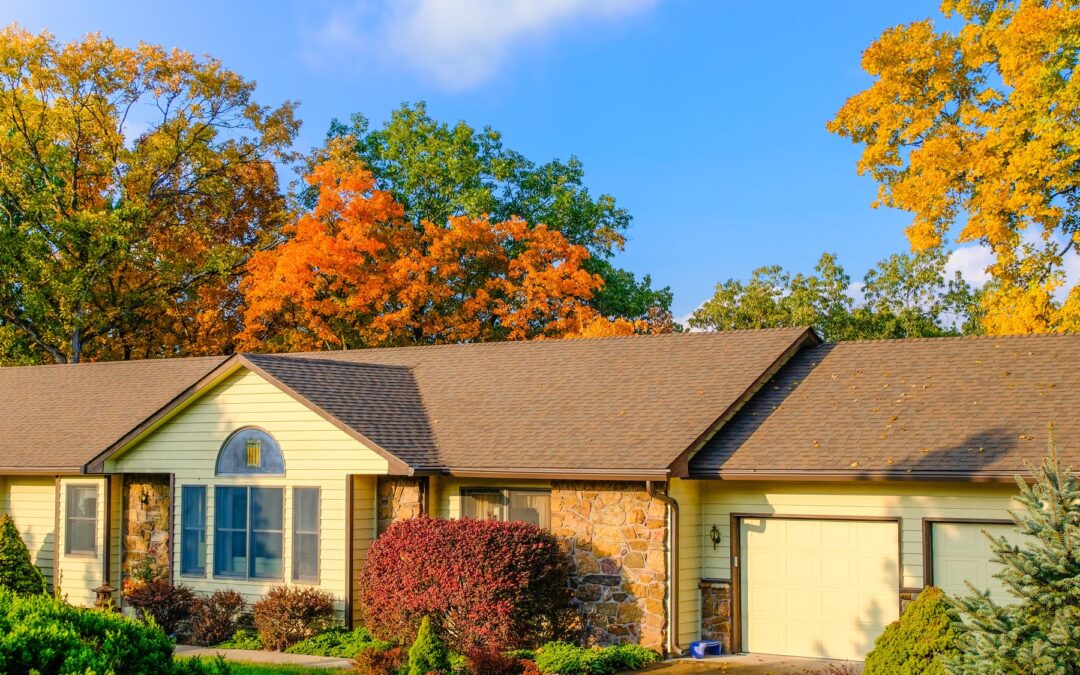In today’s environmentally conscious world, the advantages of using sustainable building materials are becoming increasingly recognized. Sustainable building materials not only help reduce the environmental impact of construction projects but also offer numerous benefits to homeowners and contractors alike. At Mayo Custom Carpentry, we are committed to incorporating eco-friendly materials in all our projects. In this article, we will explore the advantages of using sustainable building materials and provide insights on how you can make greener choices for your next construction or renovation project.
What Are Sustainable Building Materials?
Before delving into the advantages of using sustainable building materials, it’s essential to understand what they are. Sustainable building materials are those that are produced in an environmentally responsible manner. They are sourced from renewable resources, have a minimal impact on the environment during their production and disposal, and are often recyclable or biodegradable.
Common Types of Sustainable Building Materials
- Bamboo: Known for its rapid growth and strength, bamboo is a popular sustainable material for flooring, cabinetry, and furniture.
- Reclaimed Wood: This is wood that has been recycled from old buildings, bridges, or other structures, giving it a second life.
- Recycled Metal: Metals such as steel and aluminum can be recycled and used in various construction applications.
- Cork: Harvested from the bark of cork oak trees, cork is a renewable resource used in flooring and insulation.
- Recycled Plastic: Plastics that have been recycled can be used in composite materials for decking, fencing, and more.
The Environmental Benefits
One of the primary advantages of using sustainable building materials is the positive impact on the environment. Traditional building materials often require significant energy to produce and can lead to deforestation, pollution, and waste. In contrast, sustainable materials help conserve natural resources and reduce greenhouse gas emissions.
Reduced Carbon Footprint
Sustainable building materials typically have a lower carbon footprint compared to traditional materials. For instance, bamboo absorbs more CO2 during its growth than most trees, making it an excellent carbon sink. Additionally, materials like recycled metal require less energy to produce than new metal, further reducing emissions.
Conservation of Natural Resources
Using sustainable materials helps conserve natural resources. For example, reclaimed wood reduces the need for new lumber, thereby helping to preserve forests. Similarly, recycled metal and plastic reduce the demand for raw materials, which in turn conserves energy and reduces mining activities.
Health Benefits
Beyond environmental advantages, the advantages of using sustainable building materials extend to human health. Many conventional building materials release volatile organic compounds (VOCs) and other harmful substances that can negatively impact indoor air quality and health.
Improved Indoor Air Quality
Sustainable materials often contain fewer chemicals and pollutants. For example, natural wood products and low-VOC paints and finishes release fewer toxins into the air, leading to healthier indoor environments. This can be particularly beneficial for individuals with allergies or respiratory conditions.
Safer Construction Practices
Using non-toxic materials in construction also means safer practices for workers. Reducing exposure to hazardous chemicals and pollutants can help prevent health issues among construction crews.
Economic Advantages
Contrary to popular belief, the advantages of using sustainable building materials also include economic benefits. While some sustainable materials may have higher upfront costs, they often result in long-term savings.
Energy Efficiency
Many sustainable materials enhance the energy efficiency of buildings. For example, cork and recycled insulation materials provide excellent thermal resistance, reducing heating and cooling costs. Over time, the energy savings can offset the initial investment in these materials.
Durability and Maintenance
Sustainable building materials are often more durable and require less maintenance than traditional materials. For instance, reclaimed wood and bamboo are known for their strength and longevity. This reduces the need for frequent repairs or replacements, saving money in the long run.
Social and Ethical Benefits
Choosing sustainable building materials also aligns with social and ethical considerations. By supporting sustainable practices, homeowners and contractors can contribute to a more equitable and just world.
Supporting Ethical Practices
Many sustainable materials are sourced through ethical practices that ensure fair wages and working conditions for laborers. This is particularly true for materials like bamboo and cork, which are often harvested in developing countries.
Promoting Sustainable Industries
By opting for sustainable materials, consumers and businesses support industries that prioritize environmental stewardship. This encourages more companies to adopt sustainable practices, leading to broader positive impacts.
Practical Tips for Incorporating Sustainable Materials
Now that we’ve explored the advantages of using sustainable building materials, let’s look at practical tips for incorporating them into your projects. Whether you’re planning a small renovation or a large construction project, there are several ways to make eco-friendly choices.
Start with a Sustainable Design
The first step in incorporating sustainable materials is to start with a sustainable design. Work with architects and designers who are knowledgeable about green building practices and can help you select materials that align with your sustainability goals.
Prioritize Local Materials
Using locally sourced materials can reduce the carbon footprint associated with transportation. Additionally, local materials often have a lower environmental impact since they are adapted to the local climate and conditions.
Opt for Certified Products
Look for products that have been certified by reputable organizations such as the Forest Stewardship Council (FSC) for wood products or the Cradle to Cradle Certified™ program for various building materials. These certifications ensure that the materials meet specific environmental and social criteria.
Recycle and Reuse
Whenever possible, incorporate recycled and reclaimed materials into your projects. This not only reduces waste but also adds unique character to your construction.
Consider Long-Term Impact
Think about the long-term impact of the materials you choose. Sustainable materials should not only be environmentally friendly during production but also throughout their lifecycle. Consider factors such as durability, maintenance, and the ability to recycle the material at the end of its life.
Case Studies of Sustainable Building Projects
To further illustrate the advantages of using sustainable building materials, let’s look at some case studies of successful sustainable building projects.
The Bullitt Center
Located in Seattle, the Bullitt Center is often referred to as the greenest commercial building in the world. It features a wide range of sustainable materials, including FSC-certified wood and recycled steel. The building also incorporates rainwater harvesting and solar panels, making it a model of sustainable design.
The Eden Project
The Eden Project in Cornwall, UK, is a series of biomes constructed using sustainable materials such as ETFE (a recyclable plastic) and steel. The project showcases the potential of sustainable architecture and has become a major educational and tourist attraction.
Mayo Custom Carpentry Projects
At Mayo Custom Carpentry, we have successfully completed numerous projects using sustainable materials. Our commitment to green building practices not only helps protect the environment but also ensures high-quality, durable results for our clients. Visit our gallery page to explore different projects we’ve done.
Additional Resources
To further your knowledge about sustainable building materials and practices, consider exploring the following resources:
- Green Building Supply: A comprehensive resource for eco-friendly building materials.
- LEED Certification: Information on the LEED certification process and sustainable building standards.
- The Environmental Protection Agency (EPA): Resources and guidelines for sustainable construction practices.
Conclusion
In conclusion, the advantages of using sustainable building materials are vast and varied. From environmental benefits like reduced carbon footprints and conservation of natural resources to health, economic, and social advantages, sustainable materials offer compelling reasons for their use. At Mayo Custom Carpentry, we are dedicated to promoting and incorporating sustainable building practices in all our projects. By choosing sustainable materials, you can contribute to a healthier planet and enjoy the many benefits they bring.
Environmental Stewardship
Choosing sustainable materials is an important step towards environmental stewardship. By reducing the carbon footprint, conserving natural resources, and minimizing waste, sustainable building practices help protect the environment for future generations. Every choice we make in our construction projects can have a significant impact on the planet, and by opting for eco-friendly materials, we can contribute to a more sustainable world.
Enhancing Human Health
Sustainable building materials not only benefit the environment but also improve human health. Indoor air quality is a crucial aspect of healthy living, and by using materials with fewer chemicals and pollutants, we can create safer and healthier living spaces. This is particularly important for vulnerable populations, such as children, the elderly, and individuals with respiratory conditions.
Economic Savings
While the initial cost of sustainable materials might be higher, the long-term economic savings are substantial. Energy-efficient materials reduce heating and cooling costs, and durable materials lower maintenance and replacement expenses. Investing in sustainable building materials is a smart financial decision that pays off over time.
Social Responsibility
Supporting sustainable industries and ethical practices is a responsibility we all share. By choosing materials that are sourced responsibly and produced ethically, we contribute to fair labor practices and promote social justice. This is particularly important in industries where exploitation and poor working conditions are prevalent.
Innovation and Creativity
Sustainable building materials often inspire innovation and creativity in design. Architects and builders are constantly exploring new materials and techniques to create beautiful, functional, and sustainable structures. This not only enhances the aesthetic appeal of buildings but also pushes the boundaries of what is possible in construction.
Call to Action
If you are considering a construction or renovation project, take the time to research and choose sustainable building materials. Work with professionals who are knowledgeable about green building practices and can guide you in making environmentally responsible choices. At Mayo Custom Carpentry, we are here to help you achieve your sustainability goals and create spaces that are not only beautiful but also kind to the planet.
By embracing sustainable building materials, we can all play a part in creating a more sustainable future. Let’s make choices today that will benefit generations to come. For more information on how we can help you incorporate sustainable materials into your next project, visit our website or contact us directly.
Together, we can build a greener, healthier, and more sustainable world.





